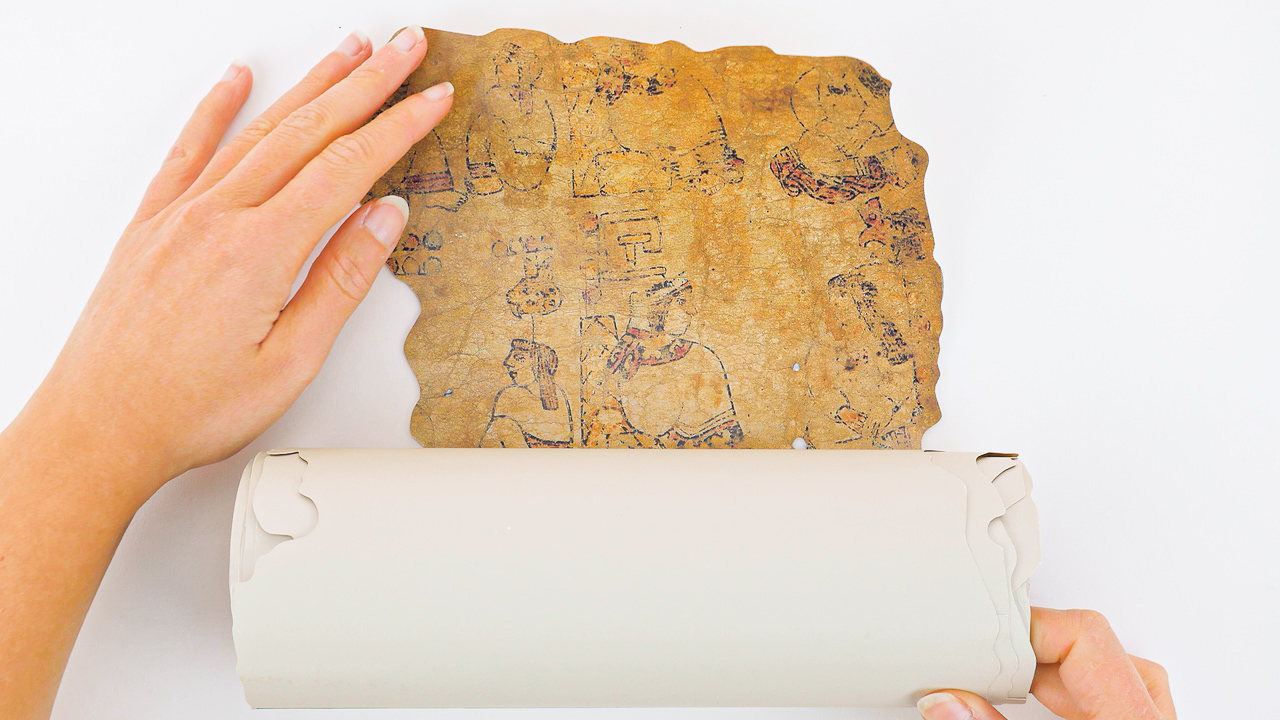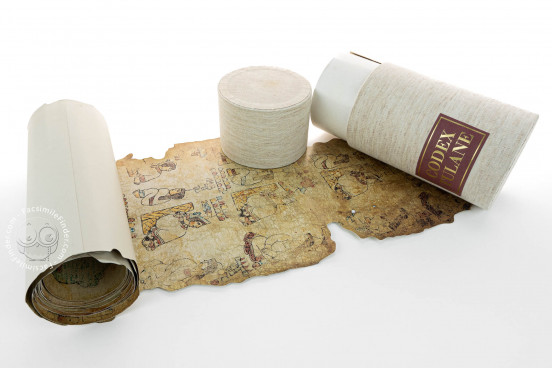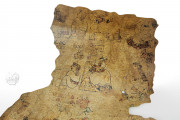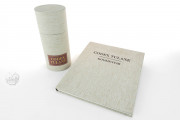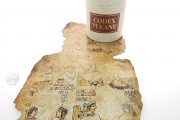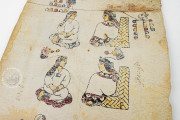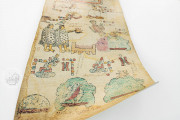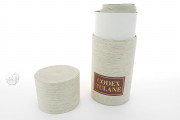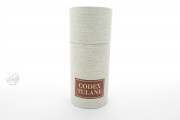Despite its nickname, the Codex Tulane is not a book of folded sheets sewn together at the spine but rather a roll. Dating from the mid-sixteenth century and originating in South Puebla, Mexico, the manuscript presents the history of two Mixtec city-states in traditional Mesoamerican pictographs. The roll presents fifteen generations of the rulers of Acatlán and Chila. These are preceded by a series of mythological origin pictures and separated by a group scene depicting the confirmation of the first ruler of Acatlán. The roll's pictographs include 112 human figures, sixty-six male and forty-six female.
The roll is made of deerskin with a thin coating of plaster to receive painting on one side. Read vertically from bottom to top, it is very long and thin, only 22 cm wide and 373.5 cm long.
Aztec and Mixtec Traditions and European Influences
The Codex Tulane painter-scribes were indigenous artists trained in styles stemming from the Valley of Mexico and Mixteca Baja. They were also receptive to European influences.
Many of the women are shown seated in what is known as the Aztec woman's pose with her legs tucked under the figure, torso facing the viewer, and feet off to the side. The male figures and some female figures are portrayed in the Mixtec tradition with the body in profile and feet flat on the floor. The proportions of the priest figures appear to reflect colonial influence with a height to head ratio of one to six rather than the indigenous one to four.
The colors used in the Codex Tulane, when compared to those of other manuscripts of the Mixtec region of northern Oaxaca and southern Puebla, are subdued and lighter in tonality, indicating that the artists had exposure to European painting.
Two Ways of Presenting Rulers in One Document
The roll's core content is the two sequences of rulers. The first series, which immediately follows the opening scenes of mythic origins, presents the rulers of Chila. In each generation, the enthroned ruler is shown on the right seated opposite and facing his wife. Following a scene dubbed the "campfire scene" by modern scholars, fifteen generations of the rulers of Acatlán are presented, with the royal couples occupying only half the width of the roll along the right side and with the bride's parents depicted on the left.
A Roll Repurposed
Around 1801 Mixtec glosses were added on both the obverse and reverse of the roll to authenticate a land claim involving the town of San Juan Ñumi south of Chila. In 1912 the manuscript was in the town of San Martín Huamelalpan in Oaxaca, Mexico. After being for a time in the possession of Samuel Daza, it was sold by the Spanish-Mexican merchant Felix Muro to Alfred Onken in 1929. Shortly thereafter, it was acquired by the Department of Middle American Research at Tulane University (in 1932). In 1964, that department's collection became the Latin American Library under the aegis of the Howard-Tilton Memorial Library at Tulane.
We have 1 facsimile edition of the manuscript "Codex Tulane": Der Codex Tulane facsimile edition, published by Akademische Druck- u. Verlagsanstalt (ADEVA), 1991
Request Info / Price
